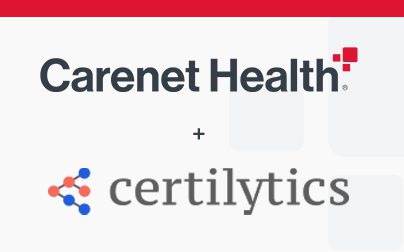Carenet Health HEDIS® engagement teams have been helping health plans and providers connect with patients about closing their gaps in care for more than 15 years. We’re written best-practice guides about the topic, and covered the “how” and “why” of HEDIS (and CMS Stars) engagement tactics on the Carenet Resource Center.
Yet even with our industry-leading HEDIS engagement activation rates, we know that asking individuals to close their gaps in care and having them accept the offer to make an appointment isn’t easy. Even before COVID-19, four out of every five Medicare plan members across the U.S. failed to make and keep an annual wellness visit appointment, and studies have now revealed a shadow health crisis of delayed care, thanks to the pandemic. (For more information on the state of HEDIS measures, visit the NCQA website.)
These concerns led us to once again explore our HEDIS strategies—to dig even deeper into our organizational knowledge, which is gained by working with 250+ healthcare organizations and implementing hundreds of HEDIS outreach programs at any given time.
Below, we’ve outlined what we found to be the most common reasons health plan members and patients might decline our first offer to schedule a gap-closing appointment—and what helps move the conversation beyond that first negative reaction to a positive one.
First, let’s talk definitions and process
With each live phone interaction made on behalf of our clients, our HEDIS engagement teams work through what we call the rebuttal process. A rebuttal by definition is a contradiction to a previous objection. Our multi-step process begins when an individual expresses reservation about making a medical appointment that would close a care gap. That statement should always be followed by the question: “May I ask why you’re not interested in scheduling your appointment with me today?” Asking why is needed, so an engagement specialist can determine the root cause of the individual’s hesitation or outright refusal.
Once a cause is uncovered, engagement teams can select the pre-defined rebuttal script that turns hesitancy into acceptance. Each rebuttal script should provide specific information designed to eliminate concerns and make the individual feel more comfortable with a “yes” decision.
Now, let’s discuss what we’ve found to be the top reasons patients and health plan members say “no thanks” to appointment-setting, and the next steps we suggest for changing that response to a “yes please.”

Reason for refusal:
The individual sees an unfamiliar phone number for the incoming call and worries it’s a scam.
Root cause:
Mistrust
Next steps:
- Reassure the patient that you’re calling on behalf of a known health plan or provider, using the organization’s full and formal name.
- If three-way calling is part of the program, review with the individual how you can use a conference call to schedule the appointment, with a physician practice providing additional confirmation that the outreach is legitimate.

Reason for refusal:
The individual says they don’t have time to schedule an appointment right now.
Root cause:
Timing of call
Next steps:
- Explain the call will only take a few minutes and express how much you value their time.
- Discuss importance of scheduling the necessary appointments.
- Mention the convenience of getting this handled right now while on the phone, which will save them additional time later in having to look up phone numbers, etc.
- Ask if there is a reason why it’s not a good time (vacation, illness, work), acknowledge the concern, reiterate you will be very quick in making this important appointment.
- Praise or empathize with their final decision.

Reason for refusal:
The individual states they will schedule the appointment on their own.
Root cause:
Control
Next steps:
- Express the convenience of setting the appointment now and let them know they have complete input into the details. This is just a convenience call.
- Reiterate that you will be quick and ultimately save time and hassle for the individual.
- Ask when they typically schedule appointments. That question can help them see that they really don’t have a plan of action on their own, and right now is a good time to act.

Reason for refusal:
The individual states they already see their doctor regularly.
Root cause:
Too many physician visits already
Next steps:
- Explain that routine visits are different than, say, an annual wellness visit.
- Clarify that this will ultimately ensure fewer doctor appointments; this kind of appointment may look for certain symptoms or signs that a routine visit could overlook.
- Ask if they already have an upcoming scheduled appointment with their doctor. If so, offer to call and add this screening to that appointment, if possible.

Reason for refusal:
The individual says they don’t want to discuss over the phone.
Root cause:
Need for privacy
Next steps:
- Express understanding and offer to schedule the appointment without speaking about anything personal.
- Explain you can get the physician office on the line, and they can speak directly to them.
- Reiterate the convenience of getting this taken care of right now.

Reason for refusal:
The individual states they do not have a primary care physician (PCP) or are changing PCPs.
Root cause:
Lacks strong connection to the healthcare ecosystem
Next steps:
- Offer to use a provider lookup tool to find an affiliated, conveniently located physician and/or facility.
- Discuss the convenience of right-now appointment setting.
- Explain that scheduling an appointment will take less than 3 minutes to find a PCP close to work or home with convenient hours, and then set everything up quickly. This lets them knock something off their to-do list.

Reason for decline:
The individual does not provide a reason.
Root cause:
Disinterest/disengaged
Next steps:
- Emphasize the importance of the relevant screenings and share benefits of early detection.
- Explain that screenings are for healthy people, not just sick people. Preventive care is key to healthy living.
- Reiterate the convenience of taking just a few minutes to book the appointment right now.
Wrapping up with fundamentals
The rebuttals outlined above can be helpful in any HEDIS engagement program. There are also several key elements that are the building blocks for ALL types of one-on-one consumer engagement, which are worth a quick review:
- If an individual says no to an offer, always provide a helpful and kind rebuttal. Believe it or not, most HEDIS engagement programs that our clients come to us for help with have no scripted rebuttals. Fortunately, we’ve tested and analyzed millions of scripts as an organization and understand what works.
- Keep your rebuttal scripts short. In our experience, robust scripts are typically not as successful as those that are more succinct.
- Gauge interest with understanding and empathy.
- Empower—don’t pressure—individuals to make their own decisions.
- Use the individual’s name in your conversation. Personalization can help encourage action.
- Take time to understand the why behind every outreach program and interaction.
- Remember that physician practices/scheduling teams are key to success.
- Keep in mind “2 No’s and Go.”
- Above all, build trust and rapport with your tone of voice and choice of words.
Contact us for more information and insights
If you’d like to discuss your HEDIS-related engagement efforts, simply reach out through our contact form and we’ll be in touch quickly to set up a brief conversation. For the latest insights on closing care gaps, check out our trend brief, New + Tried and True: Five Ways to Close More Gaps in Care.
HEDIS® is a registered trademark of the National Committee for Quality Assurance (NCQA).



